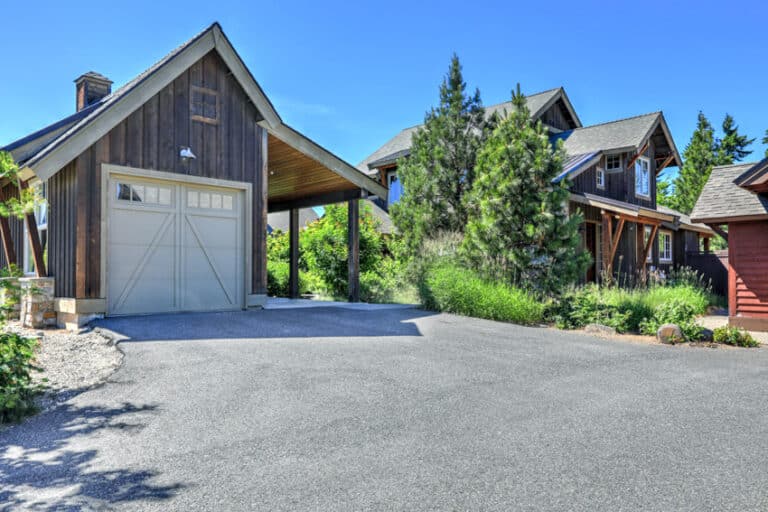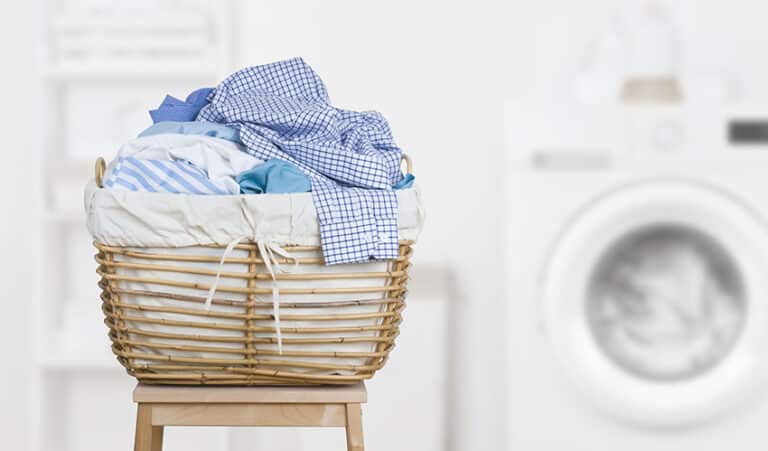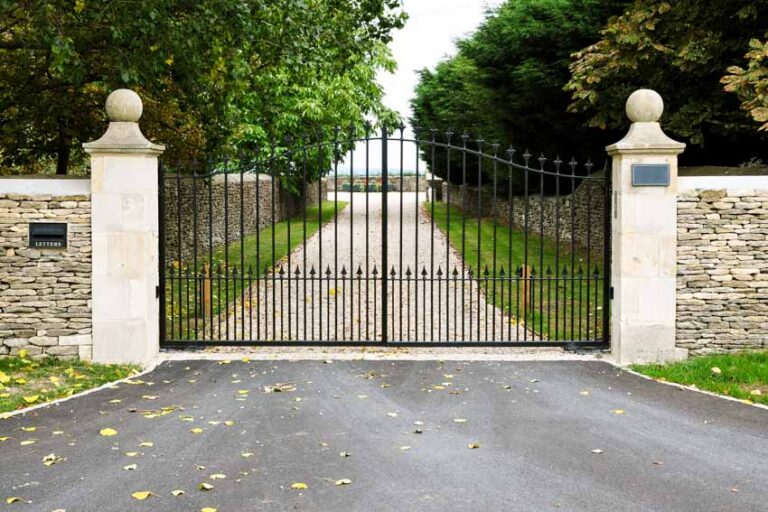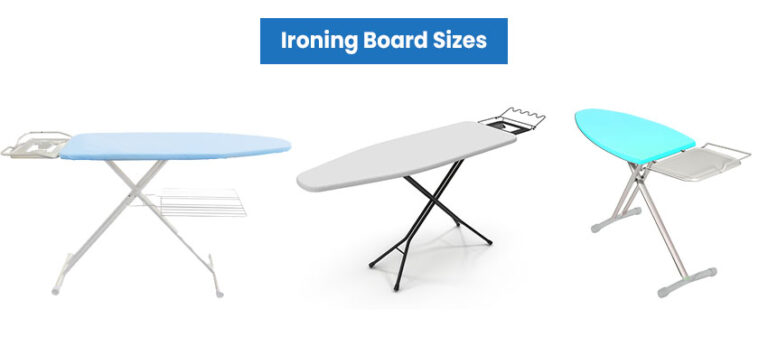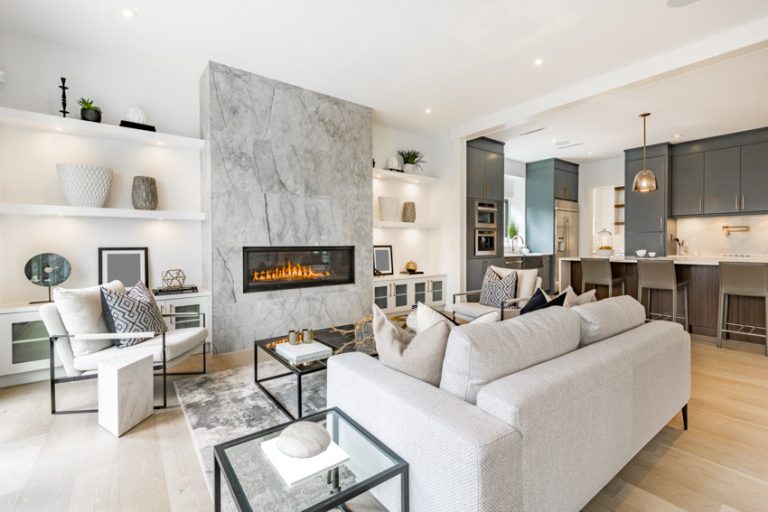Sheetrock vs Drywall (Types & Size Guide)
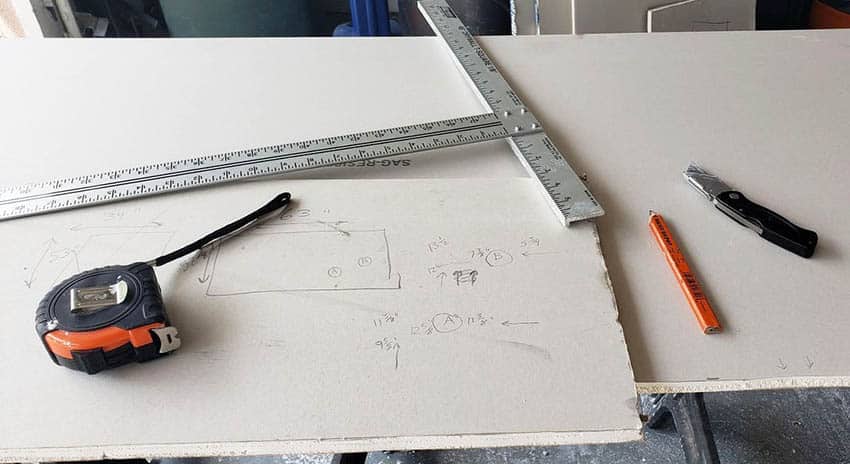
When planning to remodel your house, there is a giant chance that you will probably use drywall. To better understand the differences when it comes to sheetrock vs drywall, we will look at the individual materials. Below you’ll find out which type to use depending on your project. To get started, we will look at the differences.
Difference between Sheetrock and Drywall
Many people don’t know that sheetrock is a brand of drywall. It is not a different type of building material. First things first, drywall and sheetrock are just the exact same thing. Drywall is made up of gypsum plaster pressed in between a set of two thick paper sheets.
It is normal to find most people referring to the two materials in interchangeable terms. It is not many people that can tell the difference since it is not big.
The only difference in the two materials is arguably only the chemicals that the sheetrock brand has patented. Apart from that, there is no practical difference that would put the two apart. However, sheetrock is a brand name patented by the US Gypsum company.
What Is Drywall Made Of?
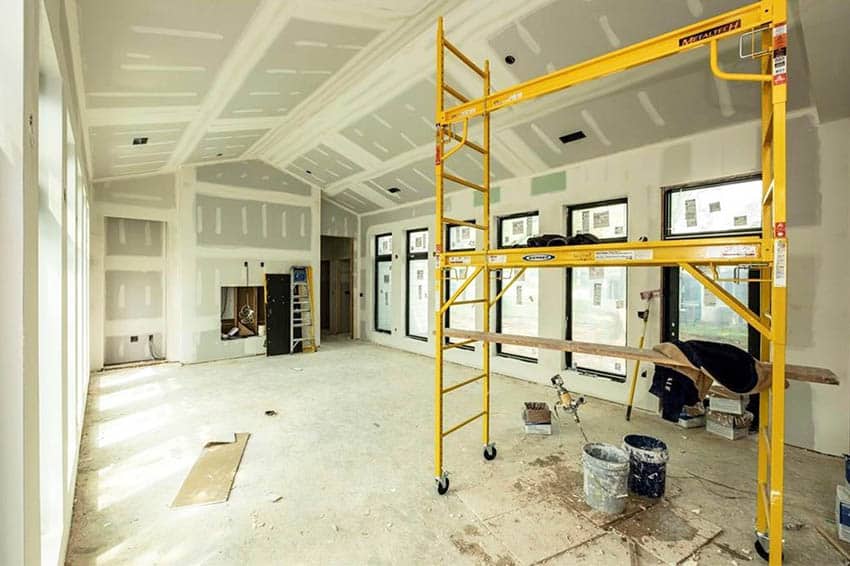
Taking a trip down the memory lane, people used to make walls using plaster. This was a great idea back then. However, the process was pretty time consuming and required great skills. In 1894, the Sackett board made by Augustine Sackett changed this. Though the Sackett board did not become popular immediately, it had made its name by the end of the Second World War.
Currently, drywall is constructed from lightweight materials. These materials are very strong. The commonly used material is gypsum.
Gypsum is a very hard rock that makes very strong materials. It is crushed and ground into a very fine powder. This powder is then pressed between a set of two thick papers. These papers, together with the pressed gypsum, form the board.
Most of these boards are distributed in measurements of 4 by 8 feet. However, if you need larger boards, they will be availed to you. The boards are then cut and nailed into the wooden frames of a building. Sheetrock, on the other hand, refers to a brand name that Gypsum Company uses for its drywall.
Types of Drywall
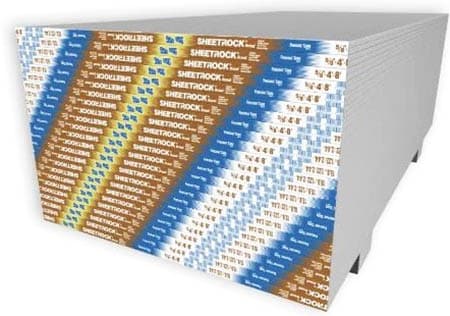
Drywall comes in different types. These are dependent on the expected use and where it will be installed. They also come with tapered edges. The tapered edges run on the longer sides of the boards.
When joined together, the tapering produces a shallow groove that holds the joint compound. This is important since it gives the finishing to have invisible joints. The types of drywall that you might need are:
Regular Drywall (Whiteboard)
This type of wall is generally white on one side and brown on the other side. Economically, it is the best choice.
Regular drywall comes in a wide range of sizes. The smallest size is 3/8 inches, while the largest is 1 inch. However, if you need other sizes, you can organize them with your supplier. Of all the types of drywall the most common type is available in 4 x 8-foot panels.
Green Board
This type is known to be an excellent choice for moist environments. The wall has a green cover that helps in resisting moisture. Regular drywall doesn’t have this capability. Due to this capability, green boards will go deeper into your pockets than the regular whiteboard.
However, moisture resistance does not mean that the board is waterproof. It is advisable to avoid using this kind of board if it will come into contact with water. Green boards are often used to back tiles in areas with limited wetness. These areas include bathrooms, kitchens, laundry rooms, and also the utility rooms.
Blue Board
Blue boards are also commonly referred to as plaster baseboards. These boards are mostly used for veneer plastering. The surface papers on these boards have great absorption capabilities. Blue boards have very high resistance for mold and water.
Since the boards are used for cosmetic purposes, you will have to do a bit of work to put on the veneer plastering. Blue boards are not made for paint, tape, or mud. It is, therefore, critical that you desist from using them on these boards. You will find these boards are a great addition to your bathrooms.
Paperless Drywall
Paperless drywall is a replacement for normal paper drywall. They have covered with fiberglass instead of the normal paper cover. This glass protects the board from destructive elements like rot. Paperless drywall is also very resistant to mildew and mold.
The board is a little tougher than other variations of drywall. Paperless drywall has a bit of texture. Due to this, you will need to use joint compound. This compound will help you in achieving a smooth and clean finish.
Purple Board
These are drywall with more superior and richer qualities. Purple boards have very superior capabilities for mold and moisture resistance.
They are compatible with most installations. These boards are, however, best suited for high moisture environments. If there is an expected contact with water, purple boards are a great choice.
Type X
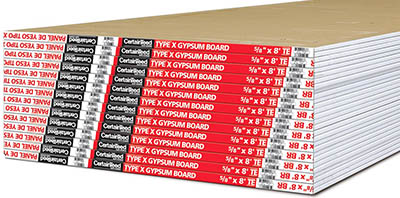
Cutting type X boards is pretty difficult. Working with the board is also pretty difficult as compared to other boards. The boards are usually used in apartment buildings, garages, rooms, and other structures required by construction codes.
The boards are made with non-combustible fiber. The most common type of these boards come in 5/8 inches worth of thickness. This thickness can also be used for soundproofing purposes.
To be fire-resistant, a Gypsum board has to go through a minimum of 1-hour fire resistance. This goes for the 5/8-inch boards. ½ inch boards are taken through ¾-hour of the resistance testing in a single layer.
Soundproof Boards
These boards are mostly made of wood fiber, gypsum powder, and polymers to increase the STC. This makes them a little harder to cut than the regular type of walls.
Most of these boards are used in areas that have noise problems. Other uses include soundproofing rooms for audio recording and other purposes.
Sheetrock Sizes
Here is a breakdown in the most popular standard drywall sizes:
| Thickness | Size | Weight |
|---|---|---|
| 1/4″ | 4’x8′ (Standard) | 38.4 |
| 4’x10′ (Standard) | 48 | |
| 4’x12′ (Standard) | 57.6 | |
| 4’x14′ (Standard) | 67.2 | |
| 3/8″ | 4’x8′ (Standard) | 44.8 |
| 4’x10′ (Standard) | 56 | |
| 4’x12′ (Standard) | 67.2 | |
| 4’x14′ (Standard) | 78.4 | |
| 1/2″ | 4’x8′ (Standard) | 51.2 |
| 4’x10′ (Standard) | 64 | |
| 4’x12′ (Standard) | 76.8 | |
| 4’x14′ (Standard) | 89.6 | |
| 4’x8′ (Lightweight) | 50 | |
| 4’x10′ (Lightweight) | 60 | |
| 4’x12′ (Lightweight) | 70 | |
| 4’x14′ (Lightweight) | 80 | |
| 5/8″ | 4’x8′ (Standard) | 70.4 |
| 4’x10′ (Standard) | 88 | |
| 4’x12′ (Standard) | 105.6 | |
| 4’x14′ (Standard) | 123.2 | |
| 4’x8′ (Lightweight) | 66 | |
| 4’x10′ (Lightweight) | 79.2 | |
| 4’x12′ (Lightweight) | 92.4 | |
| 4’x14′ (Lightweight) | 105.6 |
Drywall Thickness
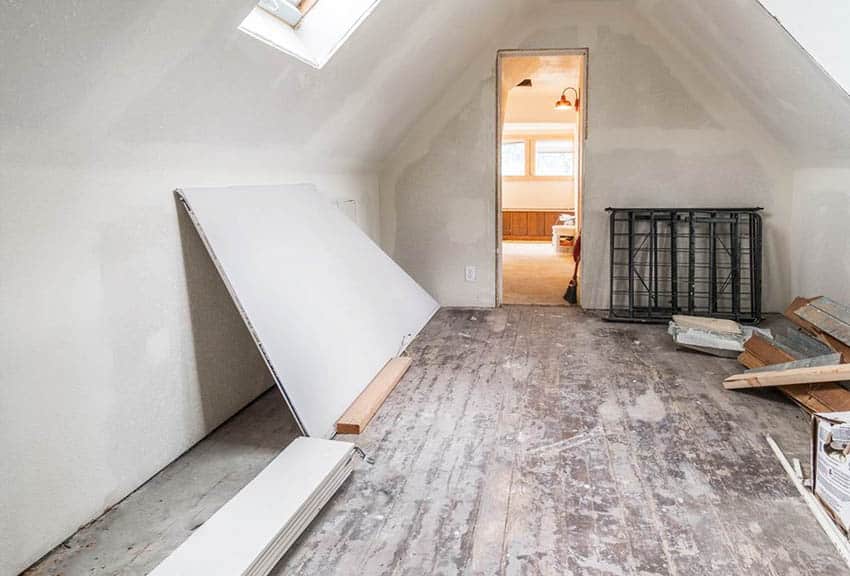
There are many types of wall thickness options from which you can choose from. This decision should be informed by the kind of installation you have in mind. Below is a quick preview of the variances of wall thickness you can find from your nearest store.
• ¼ inches board – This is the lowest amount of thickness available for any board that you choose. You will find it a great option for remodeling purposes. The board is mostly used for ceilings and interior walls that do not need thick reinforcement. Visit this page for more info about ceiling textures.
• ¾ inches thickness – Being three times thicker than the standard thinnest board, this board is essential for reinforcing your installations. This kind of wall is used to strengthen interior walls in industrial setups.
• ½ inches thickness – This kind of wall is made with extra features. These features include moisture resistance, different materials, and other features. Boards with these features include the green boards, pink boards, and type X.
Standard Drywall Thickness
For most of your needs, the standard wall thickness that you will require is typically ½ inches. Though you will find yourself faced with many choices, the most common wallboard that you will probably need is ½ inches in thickness. The surface size for the most regular board is 4 x 8 inches.
What Is The Thinnest Type Of Drywall
Some needs will call for the thinnest wallboard. If this is the case, the thinnest you can get is the ¼ inches board. You will, however, have a generally long list of thinness to choose from.
Drywall Sheet Weight
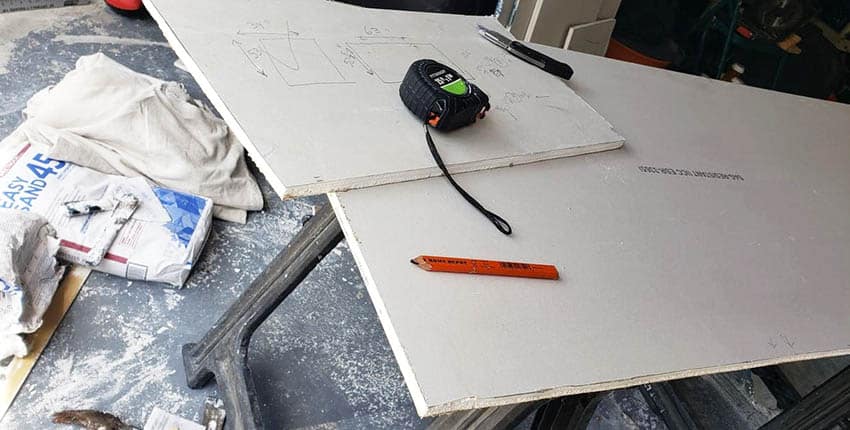
Standard wallboard with dimensions standing at 4 x 8 inches and ½ inches thick weighs approximately 50 pounds. However, the wallboard can weigh more than. If you are wondering how a thin board gets to weigh that much, then you should think of gypsum.
Gypsum is the rock that is ground into a fine powder to make the different wallboards. Since this powder is very heavy, it makes the boards heavy too. It is essential to understand that this weight is not unmanageable. The weight of the wallboard is mostly dependent on the height and width of each board.
Drywall Alternatives
What Are the Alternatives to These Wallboards?
Some of the alternatives to drywall include:
1. Textured panels for walls: Textured panels have textures printed on them. They are used to cover existing walls. These panels are mostly used to add style and color to your home.
Textured panels cannot be used as the sole installation material and therefore need a base. When added to existing walls, they become a great source of reinforcement.
2. Wood paneling: Real wood is the oldest form of wall building. It is still a great choice by many construction experts. Wood paneling is very popular and has become a favorite with many consumers. Though this kind of paneling is heavy and not entirely affordable, it can be a very stylish addition to your home.
3. Wahoo walling products: Wahoo products use expandable polystyrene to make wall installations. They are way easier to install and add heat protection to your home.
Wallboards vs. Drywall
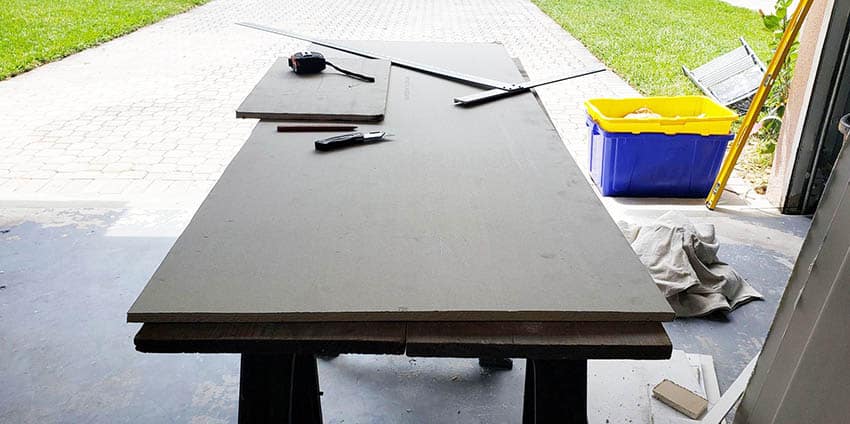
Wallboard is a term used to refer to any material that is attached to frames or studs to create wall finishes. We cannot, therefore, compare the two since they are just the same thing.
Gypsum Walls vs. Plaster
There is a growing list of reasons to choose drywall over plaster. However, this is not a reason to forsake plaster. The following is a list of reasons why people prefer plaster.
Pros of Using Plaster
- Brings a refined and smooth texture to your home
• The plaster is sound resistant
• Plaster is more professional looking
Cons of Using Plaster
- Requires professional installation
• Does not have insulation inside the walls
• Plaster application is very time consuming and difficult
Pros of Using Drywall
- Easy to install on any surface of the wall
• Minimal time of installation
• Adds insulation to your home
Cons of Using Drywall
- Not as good at sound deflection
• It is heavier than plaster
Cost of a Drywall Sheet
- Standard ½ inches drywall – $10 to $20 per sheet
• Moisture and mold resistant drywall – $13 to $25 per sheet
• Fire-resistant drywall – $13 per sheet
• Soundproof drywall – $50 per sheet
Cost of Installing Drywall
You might be wondering how much money you need to part with to get drywall installed into your home. The cost is dependent on the type and amount of materials that you need. Most of the rich-featured drywall has a higher price tag than the others.
A standard 1000 square feet of drywall installation will require an approximate of $640 for the standard ½ inches wall, $800 for the moisture and mold resistant type, and an extra $416 if you need a fire-resistant wall.
The Average Cost to Add Drywall to a Room
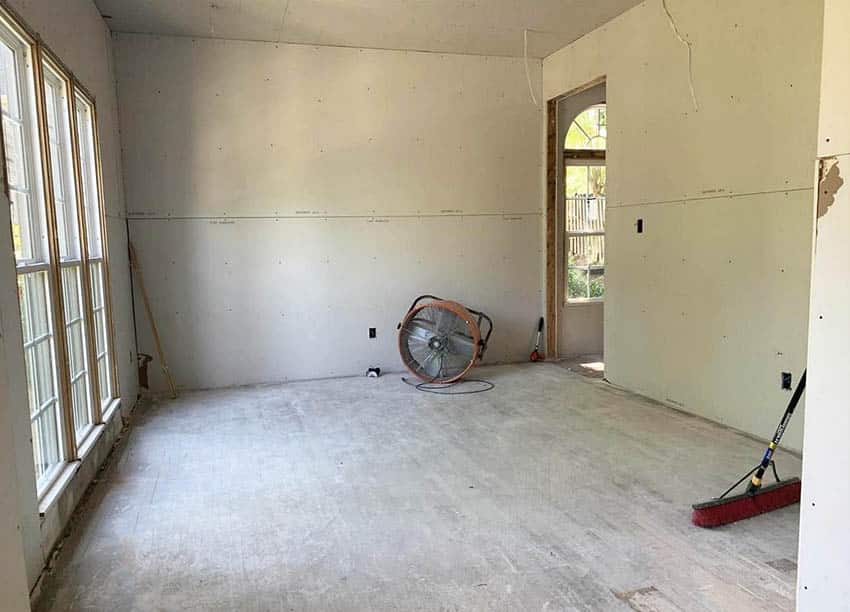
Installation costs for drywall range from $955 to $2547. This translates to an approximate of $1-$3 installation cost per square foot.
Drywall Finish Levels
Using different finishes to your wall installations will determine the total cost of the undertaking. The different levels of gypsum wall finishes are:
• Level 0: Used for temporary wall construction. It requires minimal finishing.
• Level 1: This finishing is used to conceal views and private areas, mostly in ceilings, attics, and service corridors.
• Level 2: This finish is important to cover moisture resistant boards.
• Level 3: This level uses medium and heavy hand-applied textures to prepare for final wall decorations.
• Level 4: This level employs the use of flat paint to cover angles and joints.
• Level 5: This finish is mostly recommended for environments with very poor lighting conditions.
For more related home remodel information check out our room addition cost guide here.

